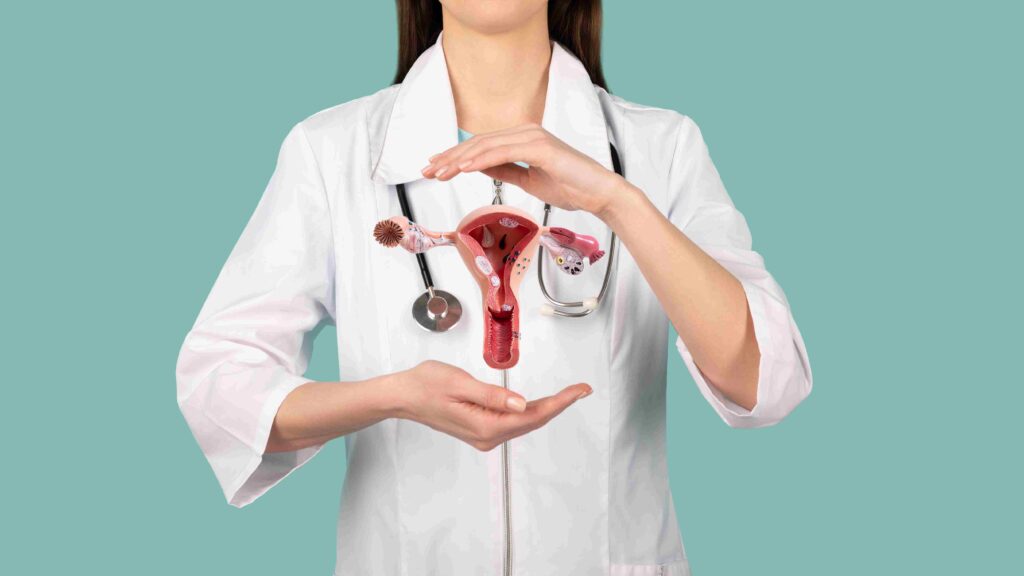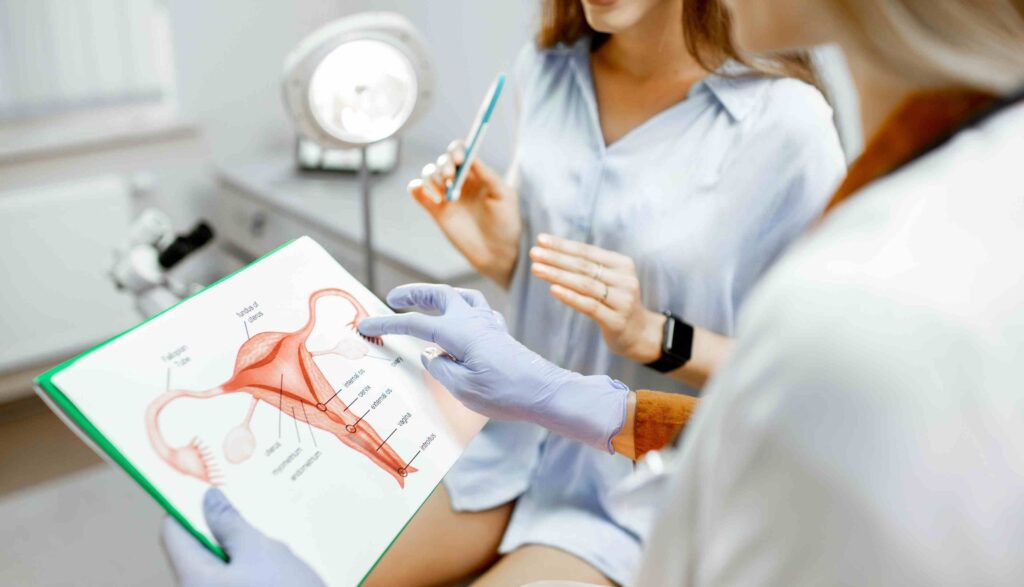It is commonly believed that with the onset of the climacteric period, all gynecological ailments in women disappear by themselves, including endometriosis after 50 is no longer considered a relevant issue. However, the reality is not as optimistic as one would hope or ideally expect.
In the climacteric and premenopausal periods, the course of the ailment has its own characteristics and manifestations. The influence of menopause on the course of this disease can be assessed by understanding what it represents, the reasons for its occurrence, and whether its natural cessation is possible or if medical treatment is required.

What is age-related endometriosis?
First of all, it is important to understand what endometriosis is as a disease. The name comes from the word “endometrium,” which refers to the inner lining of the uterus that does not normally grow and maintains its shape. The condition where endometrial cells grow in and beyond the uterus is called endometriosis. Since the growth of endometrial tissue involves estrogen produced by the ovaries, this condition is usually diagnosed in women of reproductive age.
Its development is associated with the reflux of blood during menstruation through the fallopian tubes into the abdominal cavity – the space where the liver, stomach, and intestines are located. In the area where the tissues are affected, they can bleed, leading to inflammation and subsequently the formation and development of adhesions. However, there are known cases where signs of the condition are detected in postmenopause for the first time.
Main Symptoms of the Disease
Quite often, endometriosis after 50, as in a younger age, occurs without significant manifestations and is diagnosed accidentally during ultrasound examinations and routine check-ups. However, it may have the following symptoms:
- lower abdominal pain during and before periods, radiating to the perineum, sacrum, and lower back;
- spotting before and after menstruations;
- pain during sexual intercourse;
- prolonged and heavy bleeding during periods;
- painful bowel and bladder emptying;
- impaired reproductive function;
- blood in urine and stool in atypical localization.
Frequent and significant blood loss leads to symptoms such as reduced hemoglobin levels in the blood, tearful mood, general fatigue, and drowsiness. However, even if most of these manifestations are present, it does not indicate that a woman over 50 has endometriosis.
Causes of the Disease in Women Over Fifty
The causes of the onset and development of endometriosis in women over 50 may be the same factors as in younger women, namely:
- diabetes mellitus;
- reduced immunity;
- cardiovascular disorders;
- negative genetics – endometriosis in the mother or grandmother;
- the occurrence of hormonal imbalance;
- retrograde menstruation;
- excess body weight;
- poor ecology;
- chronic inflammatory diseases of the genital organs;
- history of abortions, surgeries;
- use of an intrauterine device as a contraceptive;
- radiation exposure;
- presence of harmful habits.
Additionally, in certain cases, endometriosis after 50 may also develop due to the transformation of normal cells into structurally identical endometrial cells. At this age, the disorder can also be caused by medication therapy prescribed by a doctor to mitigate menopausal symptoms.
Consequences of the disorder after 50 years
Diagnosing endometriosis in women over 50 and ignoring its presence, as at a younger age, can lead to very serious consequences. Apart from infertility and chronic miscarriage, which are no longer relevant at this age, the disease is fraught with unpleasant manifestations such as chronic pelvic pain syndrome. Painful sensations can significantly increase during sexual intercourse and also in cold conditions.
The pain may radiate to the perineum or anal area. However, this is not the biggest concern associated with a diagnosis of “endometriosis.” Endometriotic sites at this age are significantly more likely to undergo malignant transformation. Approximately 1-11% of women with endometriosis develop cancer.
Symptoms of Endometriosis in Women Over 50
The symptoms of endometriosis in women over 50 are not much different from the general manifestations in other age groups, if they previously existed in the woman. As is well known, the ailment very often has an asymptomatic course. However, in severe cases and when a woman has extragenital endometriosis localized in the diaphragm, intestines, kidneys, ureters, inguinal canal, lungs, limbs, spine, as well as spreading to the peritoneum, the pain can become very severe and lead to loss of working capacity.
For patients with endometriosis over 50, symptoms often include irritability, tearfulness, and an unbalanced psyche. Additionally, such women complain of dizziness and headaches, heavy bleeding, and discomfort during intercourse. Endometriosis after 50 can take a protracted course and more quickly lead to the development of cancer.

Treatment of Disease in Postmenopause
Treatment of endometriosis in women over 50 has its own characteristics and is primarily aimed at addressing pain syndrome to alleviate the overall condition, if the cessation of menstruation and changes in hormonal background did not positively affect the general picture, did not eliminate the symptoms, and did not stop the progression of the disease. To alleviate painful sensations, treatment involves the use of antispasmodics, prostaglandin inhibitors, and analgesics.
However, for women over 50, the age poses risks of developing pathological outcomes of the disease. Therefore, an alternative to conservative treatment to avoid the risks of oncology and recurrence is the surgical removal of the uterus, in some cases – together with the ovaries. The operation is usually performed using laparoscopy, meaning through small incisions. In this case, postoperative pain is minimal, and recovery is significantly faster.



Download the app and get 7 days free use
 eng
eng rus
rus deu
deu spa
spa fra
fra ita
ita por
por srp
srp tur
tur ukr
ukr por
por bos
bos


